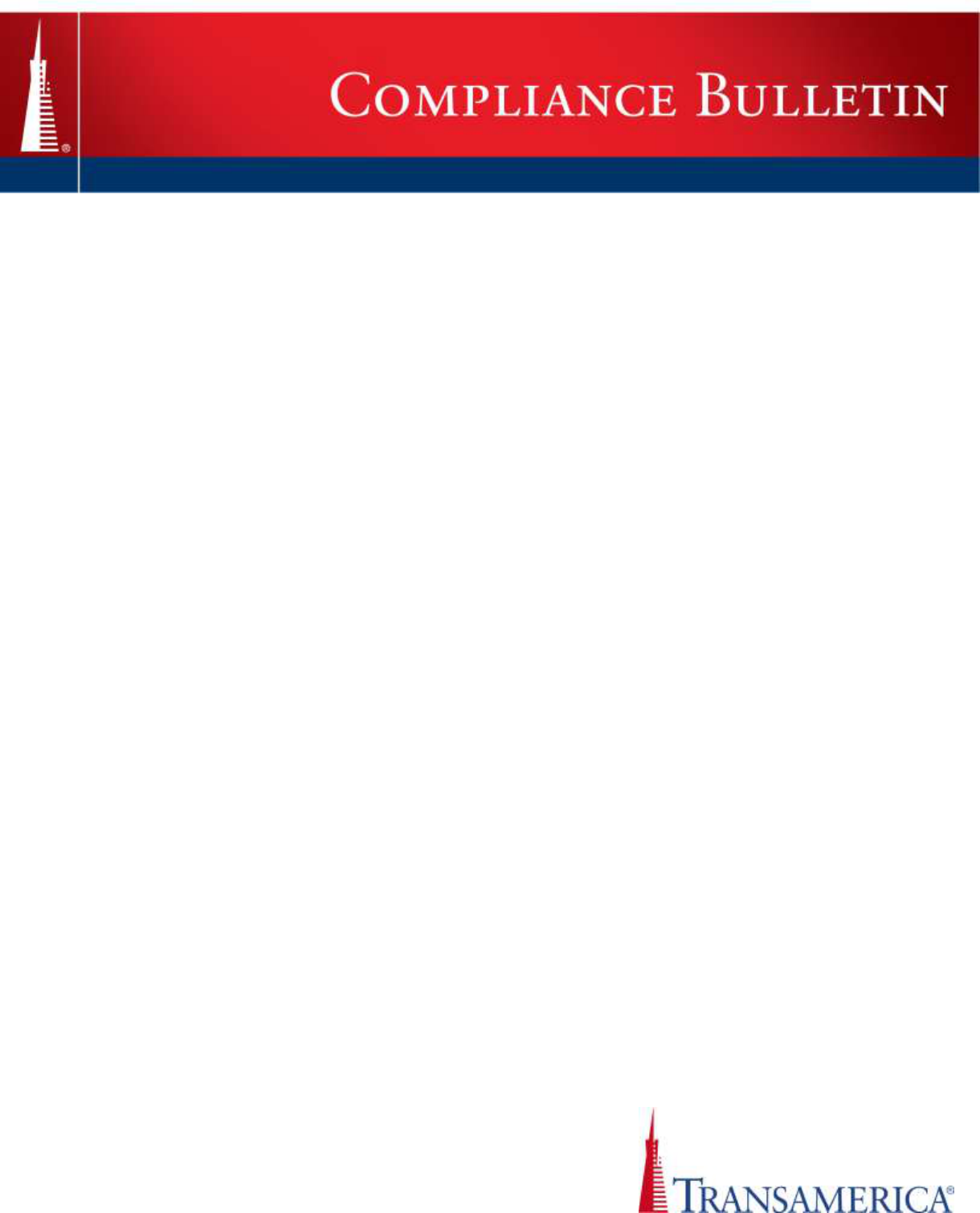
Transamerica Life Insurance Company, Cedar Rapids IA 52499
For agent use only. Not for distribution to the public.
June 17, 2015
To: General Agents & Agents
SUITABILITY STANDARDS FOR LONG TERM CARE
ACCELERATED DEATH BENEFIT RIDERS
People buy long-term care insurance for many reasons. Some clients don’t want to use their own assets
to pay for long-term care. Others don’t want their family to have to pay for care or don’t want to go on
Medicaid. But long-term care insurance may be expensive, and may not be right for everyone.
Utilizing a rider attached to a life insurance policy that accelerates death benefits to cover long-term
care expenses is an approach to help clients meet their insurance needs. However, producers should
know that these riders are subject to many of the same laws and regulations that apply to “stand-alone”
long-term care policies.
According to Utah law, the insurance company must ask each applicant for his income and asset levels
and the Company has developed the attached Long-Term Care Insurance Personal Worksheet for this
purpose. This information should be used by the producer and the applicant to help determine if the
contemplated long-term care rider will be suitable for the client. Producers should review with the client
the charge for the long-term care rider.
As a general rule, charges for a long-term care rider should not exceed 7% of the client’s income. This
recommendation is found in the National Association of Insurance Commissioner’s (NAIC) Long Term
Care Model regulation. The Personal Worksheet follows the NAIC guidelines on assets, suggesting that
an applicant have a minimum of $30,000 in assets (excluding a house) before considering the purchase
of a long-term care rider.
When the Company receives the completed application the Company will verify that the Personal
Worksheet is completed and signed by the applicant or that the applicant has checked the opt-out box
and signed the form. The Company may also ask the applicant to verify his responses during the
underwriting telephone interview if one is completed. If the income and/or assets are less than $30,000
the Company is required by law to send a suitability letter to the applicant confirming they would still
like to purchase coverage. The suitability letter in both instances must be returned before the Company
can issue the policy.
